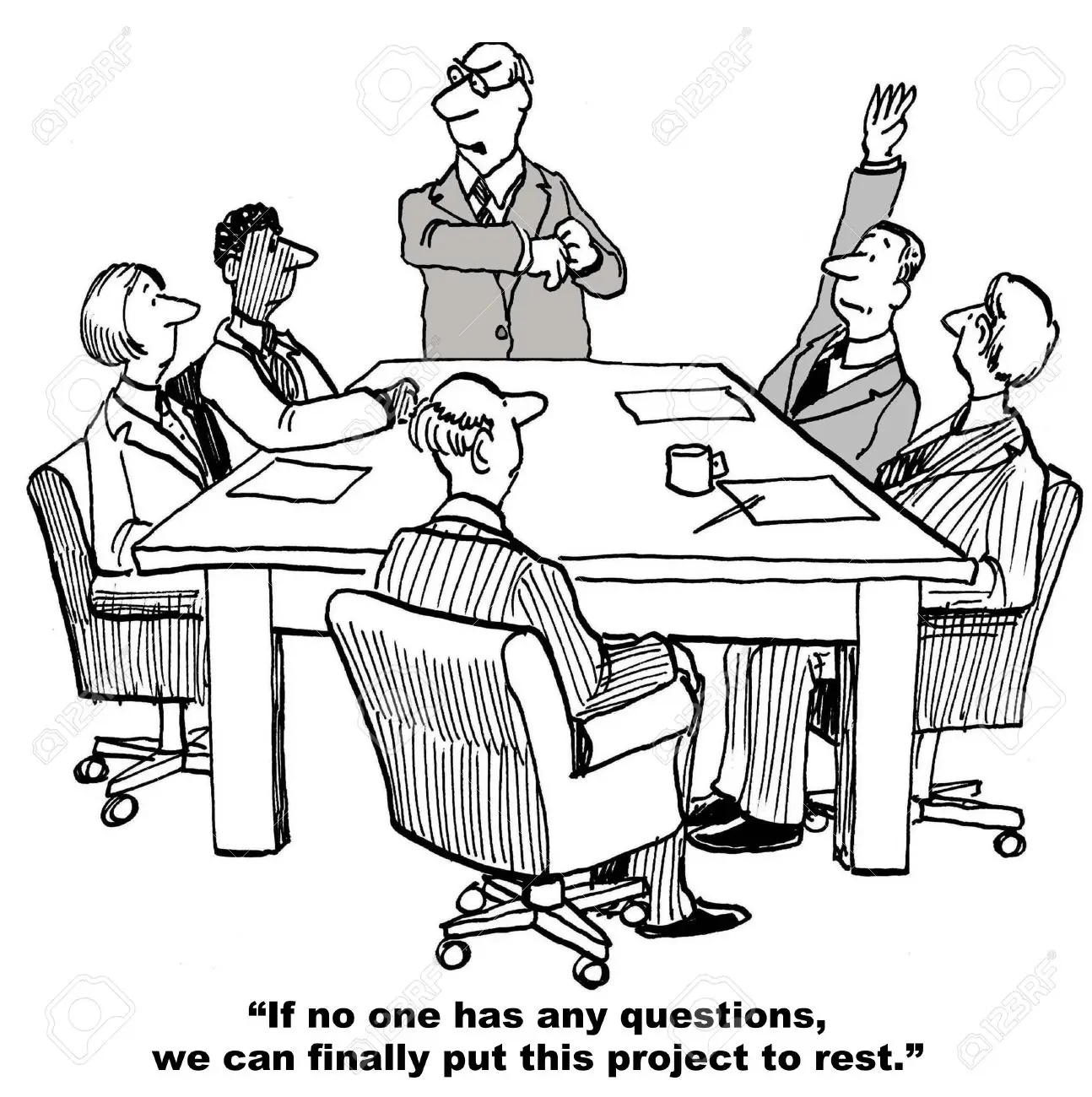Cartoon Credit to Creator: Andrew Toos
Have awkward silences become a rule of thumb in your meetings?
Are you frustrated that people seem to be sitting on their hands and not participating in important conversations?
Read more about why meetings are the linchpin of Organizational Health
We have all had that feeling of frustration when even the free coffee and snacks aren’t working to boost team participation.
If your team seems reluctant to share their thoughts and opinions, your team members may not be the problem—it is most likely you.
Silence usually means people are holding back, and it’s up to you to understand why.
It’s your responsibility as the leader to foster an open space for participants to feel motivated and comfortable to speak up. But how?
Safety can get your team talking.
During World War Two, they said that ‘loose lips sink ships’ and, in our case, ‘tight lips’ sink meetings.
One of the top reasons your team isn’t participating is because they don’t feel comfortable doing so. It’s important to understand those reasons before seeking solutions.
Often employees are pressured to be on their “best” behaviour. They would do anything to avoid looking ignorant, incompetent, intrusive, and negative. This means they often don’t ask many questions, keep their head down, don’t admit mistakes, don’t offer new ideas, and shy away from critiquing the status quo.
They may fear that if their share their opinions, that information may result in other repercussions.
If your team is focused on managing these impressions and doesn’t feel encouraged to speak up or share their opinions on improving the team or workplace, you have a problem with your Organizational Health.
What Is Heck Is Organizational Health? 10 Questions Answered by Steve
Patrick Lencioni is the standard-bearer of Organizational Health and has observed that companies with a trusting, accountable and safe workplace perform better.
What is a trusting, accountable and safe workplace? It can be defined as “a belief that one will not be punished or humiliated for speaking up with ideas, questions, concerns, or mistakes.”
Organizational Healthy workplaces, employees and managers are encouraged and are expected to speak up.
Organizational Health isn’t about lattes, gyms or quiet rooms. It’s about giving candid feedback, openly admitting mistakes, and learning from each other. Team Leaders who encourage a climate of open reflection and learning are the most productive and successful.
Improving meeting performance requires clarity of objective and healthy conflict.
When an organization lacks clarity of objective or healthy conflict, team members hesitate to share uncomfortable information with those who hold power within the organization. Or worse, they only share what they believe the people with power want to hear.
Why won’t we share because of the amygdala? When the amygdala perceives a threat, you go into a fight-or-flight mode. This instinct was useful when sabre tooth tigers prowled the woods, but it’s not effective when you need to think strategically and collaborate with colleagues at work.
Your team can combat the brain’s defence mechanism by cultivating organizational health. Everyone is encouraged to share ideas, spot problems, take risks, and keep your team talking, engaged, and productive.
How?
Allow equal participation for all
6 Tips to Speak Confidently in Meetings (Even When You’re A Bit Scared)
Another common reason that may be keeping your meeting participants from speaking up is the structure of the meeting itself. Do your participants know that active participation is expected? Is one team member taking up most of the time by giving long-winded answers?
Try these strategies:
-
- Establish expectations before a meeting starts to have everyone on the same page before the meeting gets off track.
- Set time limits for each person to say their piece. This allows everyone to speak but gives equal weight to each person’s perspective.
- Call on people reverse order of seniority to share their comments and thoughts without being swayed or silenced by more senior people on the team.
Democratize the meeting invites
So everyone feels comfortable participating in the meeting, allowing the team to decide who is invited collectively. Take a look at the invite list and really consider if anyone besides the team really needs to attend.
Incorporate introvert-friendly strategies
It feels natural to fall into a conversational rhythm whenever friends get together, with the talkers talking and the observers sitting back.
This is true with workplace teams, and it becomes tricky when one or two people dominate the meeting conversation. As a manager or facilitator, it’s important to make your meeting a fair playing ground for all types of people, especially the introverts in the room.
You can effectively encourage introvert meeting participation by utilizing timed discussions, anonymous voting, choosing the right time for the meeting, and open-ended answering exercises.
Increase your own vulnerability
3 Action To Not Kill Vulnerability On Your team
One way to establish trust is for the team leader to be vulnerable and admit their own mistakes and flaws. Demonstrate the behaviour you’d like your team members to display in the hopes that they follow your example. By sharing your mistakes and weaknesses with others, a relatable connection is created that leads to better conversations.
Make the meeting a routine.
Even if your last meeting was successful, but it was a long time, your team members will likely forget the conversational feeling of that meeting. Instead of one-time or infrequent meetings, make a point to meet with the team regularly to encourage ongoing learning, contribution, and improvement.
4 Actions To Ensure That Your Leadership Adheres To The ‘First Team’ Model




